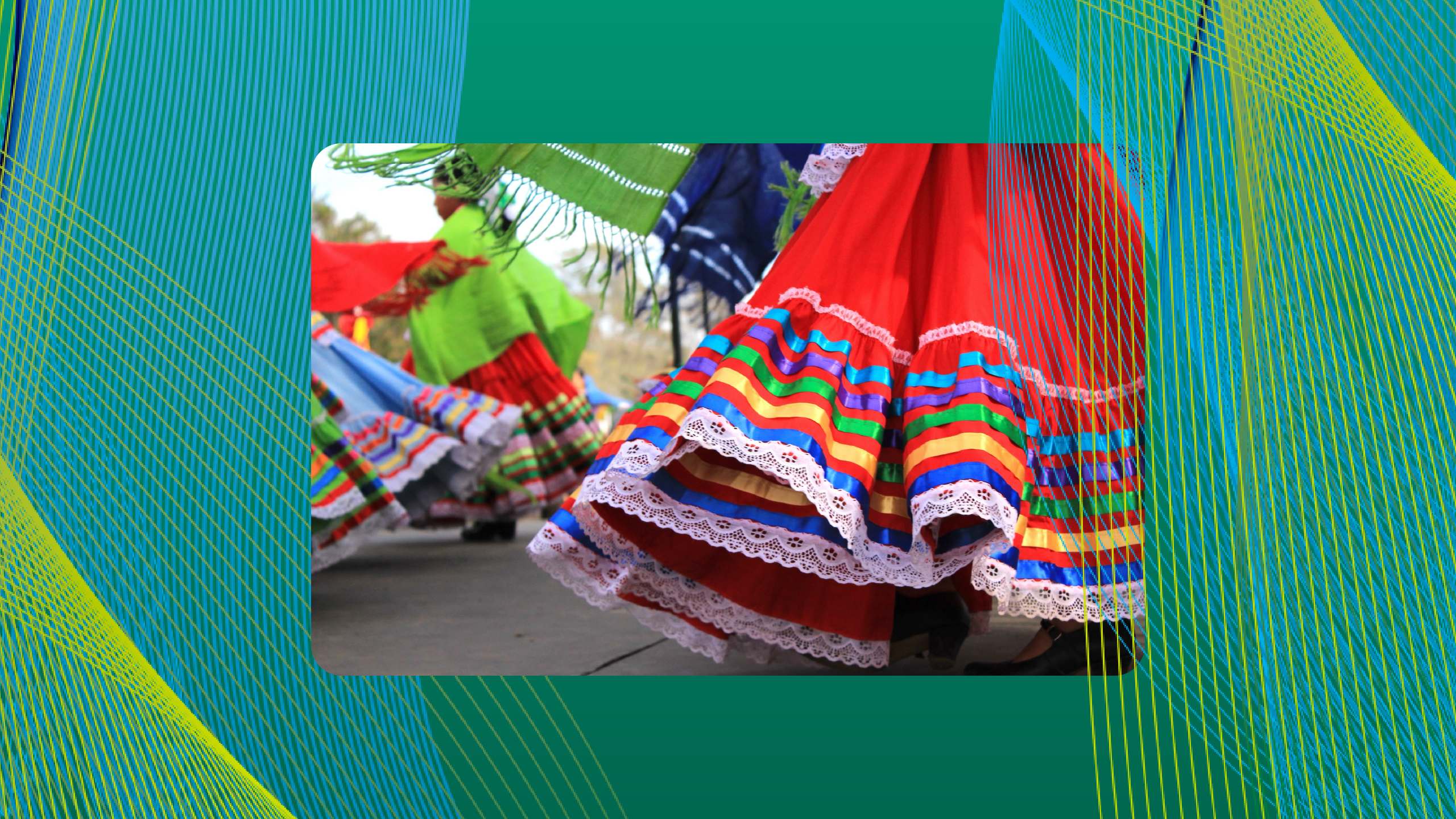From Appropriation to Appreciation: Celebrating Hispanic Heritage Month the Right Way

Each year, from September 15 to October 15, the United States observes Hispanic Heritage Month. It’s a time to celebrate the rich cultural contributions of the Hispanic and Latinx communities. But amidst the colorful festivities, music, and food, there’s a growing conversation around cultural appropriation—an issue that often blurs the line between celebrating a culture and exploiting it. Have you ever wondered if that “Dia de los Muertos” costume or that sombrero at a party crosses a line?
In this blog post, we’re taking a closer look at how we can move beyond just cultural awareness to real action. The goal is to help you walk away with a deeper understanding of why Hispanic Heritage Month matters and how we can all engage with it in a respectful, meaningful way. We’ll share some practical tips and real-life examples to inspire you to celebrate in ways that uplift and honor Hispanic culture, rather than unintentionally exploiting it. Let’s explore the nuances of cultural appropriation during Hispanic Heritage Month and how we can all engage in this celebration with authenticity and respect.
What is Cultural Appropriation?
Cultural appropriation occurs when elements of a marginalized or minority culture are taken and used by members of a more dominant culture, often without proper understanding or respect for the original meaning. While appreciation seeks to honor and understand the traditions of another culture, appropriation often distorts or trivializes those traditions.
For example, adopting an indigenous Mexican pattern for a fashion statement without understanding its cultural significance could be seen as appropriation. On the other hand, learning about the pattern’s history and purpose, and using it in a way that acknowledges its origins, could be considered cultural appreciation.
Hispanic Heritage Month, with its rich celebrations, provides an opportunity to engage deeply with the culture. But it’s also a time when lines can easily be crossed if we’re not intentional about how we interact with these traditions.
Why Cultural Appropriation is Harmful
Cultural appropriation is more than just borrowing elements from another culture—it often perpetuates harmful stereotypes and disrespects the cultural significance of certain practices or symbols. When people from outside the culture reduce it to a costume or a trend, it strips away the deep historical, religious, or social meaning behind these elements.
For example, consider the practice of face painting during Día de los Muertos (Day of the Dead). The sugar skull face paint is more than just a pretty design; it’s a sacred symbol honoring deceased loved ones and acknowledging the cycle of life and death. When this symbol is used without understanding or respect for its meaning, it can be offensive to those for whom it holds deep personal significance.
Research supports these concerns. A survey by the National Hispanic Media Coalition (NHMC) found that many non-Latino respondents believed negative stereotypes about Latinos and immigrants due to their frequent portrayal in news and entertainment media. This study shows how Hispanic and Latinx communities are often misrepresented and exploited in mainstream media, leading to feelings of marginalization.
How to Avoid Cultural Appropriation During Hispanic Heritage Month
To engage respectfully with Hispanic culture, it’s essential to approach Hispanic Heritage Month with curiosity, respect, and a willingness to learn. Here are some guidelines for ensuring your celebration is one of appreciation rather than appropriation:
1. Educate Yourself
Before you participate in any cultural tradition, take the time to learn about it. For example, instead of simply attending a Cinco de Mayo celebration, learn about the historical significance of the holiday (which, contrary to popular belief, is not Mexican Independence Day). Engage with Hispanic voices and sources to better understand the traditions you’re interested in. Books, documentaries, and conversations with members of the community are excellent resources.
2. Support Hispanic Creators and Businesses
A meaningful way to celebrate Hispanic Heritage Month is by supporting Hispanic artists, creators, and entrepreneurs. Whether it’s buying traditional crafts, clothing, or food, ensure that your purchases support the people who have created these items. This helps combat exploitation and ensures that the community benefits from the celebration of its culture.
3. Acknowledge the Origins of What You’re Celebrating
If you’re incorporating elements of Hispanic culture into your celebration, make sure to acknowledge where they come from. For example, if you’re sharing food from a specific country or region, take the time to learn about its origins and the people who created it. This simple act of acknowledgment can go a long way toward showing respect for the culture.
4. Be Mindful of Stereotypes
During Hispanic Heritage Month, it’s common to see certain cultural elements—such as sombreros, maracas, or “spicy” food—featured in ways that perpetuate stereotypes. While these elements may be part of the culture, they don’t represent the whole of it. Reducing a rich, diverse culture to a few stereotypical symbols trivializes its complexity. When celebrating, focus on authentic representations rather than reinforcing harmful clichés.
Hispanic Heritage Month: A Time for Celebration and Reflection
Hispanic Heritage Month provides a valuable opportunity to engage with Hispanic culture in a way that’s respectful, enriching, and inclusive. It’s a time to honor the many contributions of Hispanic and Latinx communities to the United States, from the arts and sciences to politics and social movements. But it’s also a time for reflection, especially when it comes to how we interact with and represent cultures that aren’t our own.
A NielsenIQ study found that 73% of Hispanic respondents believe it’s very important for companies and organizations to recognize and celebrate Hispanic Heritage Month and the contributions of Hispanics to the U.S. This shows how crucial it is for society to educate and engage respectfully to promote understanding and acceptance.
Real-Life Examples of Cultural Appreciation Done Right
Some companies and individuals have shown how to celebrate Hispanic Heritage Month respectfully, avoiding cultural appropriation. A great example is the collaboration between Nordstrom and Mexican/Black artist Cristina Martinez. In 2021, Nordstrom partnered with Cristina to showcase her powerful storytelling through art that highlights the experiences of Black and Brown communities. The exclusive “Nordstrom x Cristina Martinez” collection features designs inspired by three of her original works, each conveying messages of growth, resilience, and the importance of staying grounded while flourishing.
This example showcases how businesses can celebrate Hispanic Heritage Month in ways that amplify Hispanic voices and benefit the community, rather than simply profiting off cultural symbols.

Photos via Nordstrom PR
Celebrate with Purpose
As we enter another Hispanic Heritage Month, let’s challenge ourselves to move beyond surface-level celebrations. Instead of merely attending a parade or enjoying a taco night, take the time to educate yourself about the history and significance behind these traditions. Support Hispanic-owned businesses, engage with authentic cultural expressions, and be mindful of how your actions contribute to either the appropriation or appreciation of this vibrant culture.
Cultural appreciation requires mindfulness and respect. It’s about recognizing the history, struggles, and contributions of the people behind the traditions. So, this Hispanic Heritage Month, let’s celebrate with purpose and integrity.
More Blog Posts

Let’s be real—communication at work is kind of like a group chat. Some people over-share, some barely respond, and others...

Once upon a time, PR meant faxing a press release and hoping someone, somewhere, had paper in their machine. All...

Employee Appreciation Day, recognized on the first Friday in March, will be celebrated this year on March 7. It is...

1. The Power of Sustained Impression (Or: Stop Passing Out at First Dates) Let me tell you about a date...

